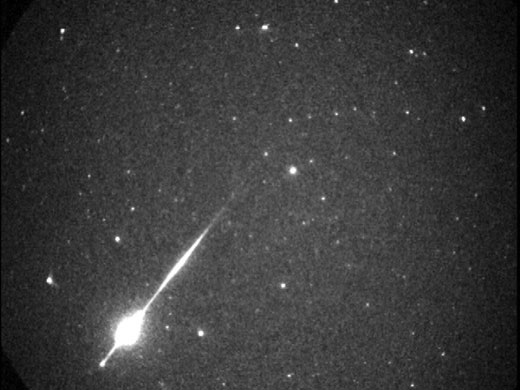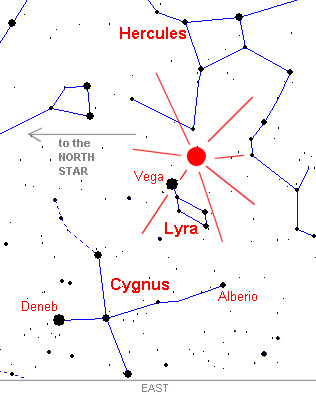The meteor shower drought is OVER!
April 20, 2020
By Samantha Armistead
If you’re like me, you love looking up at the sky. As a kid I always hoped to catch a glimpse of a shooting star and make a wish. Later I learned that shooting stars are more accurately called meteors. They’re streaks of light you see in the sky when cosmic debris enters Earth’s atmosphere.
Although sporadic meteors can happen any night, the best meteor viewing happens during the annual meteor showers. Unfortunately, we’ve been in a “meteor shower drought.” There’s only one major meteor shower in the first three months of the year, right at the beginning of January. Thankfully, the sky will soon be putting on a (hopefully) fantastic show of little streaks of light that is worth viewing.

If you’re looking for something to break up the monotony of this stay-at-home order, make some hot coffee or cocoa and plan to stay up late—or get up very early—to try to catch a glimpse of the Lyrid meteor shower. This meteor shower occurs from April 16th until April 25th, but the best viewing night will be the evening of Tuesday, April 21st , 2020, into the early morning of the 22nd. If you have not already disrupted your sleeping schedule, I commend you on that, but I know that I will be up late looking at the stars that night and hope you will too.
The reason we can see these meteors is due to something quite far away—the comet called Thatcher. When this comet orbits the Sun it sheds debris, and every year Earth plows through some of those particles and some of it will enter our atmosphere. Our atmosphere acts as a protective blanket, “burning up” these chunks of rock and ice, both defending us and putting on a brilliant display.
Now, where to look. If you have ever been to a Morehead Planetarium & Science Center fulldome theater show in the summer, you may have been asked to find three bright stars straddling the Milky Way and were also asked what shape this makes in the nighttime sky. For those geometry wizzes reading this, you likely figured out it forms a triangle, which is aptly named the Summer Triangle. In this triangle is a constellation called Lyra which is where the name “Lyrid meteor shower” comes from. The meteors will appear to radiate from this area of the night sky, but they can be seen in all parts of the sky.
To learn where to find this little harp constellation in the sky, take a look at Morehead’s star charts or use the free stargazing program Stellarium. The best time to see Lyra and the meteors that appear to come from nearby is late in the night or early in the morning, when Lyra is high overhead.
It can be easy to get your hopes up about what to see. Astronomers expect that there will be about 10-15 meteors per hour at its peak, meaning that it will not be a rapid-fire display illuminating the night. However, light pollution could make it hard to see these dim flashes across the sky. Because of this, it will be best to stargaze from your backyard with nearby lights turned off.
One lucky astronomy coincidence that will help us view these meteors this year is the fact that the Moon is close to its “new moon” phase during the peak hours of the shower, meaning that it will not drown out the light from the meteors.

If you do try looking for the meteors in the coming nights, try to look for some other fun objects as well! Take a look around for Orion and Venus in the early evening sky as a preview to the show. As part of Morehead At Home, some of our educators put on fun stargazing online events on Tuesdays and Thursdays and they can help teach you what to look for and how to do so.
Happy skywatching and I hope you get to make some wishes this month!
For more Lyrid meteor viewing tips, check out this 5-minute video interview from the Museum of Life and Science with Amy Sayle, Morehead astronomy educator.
